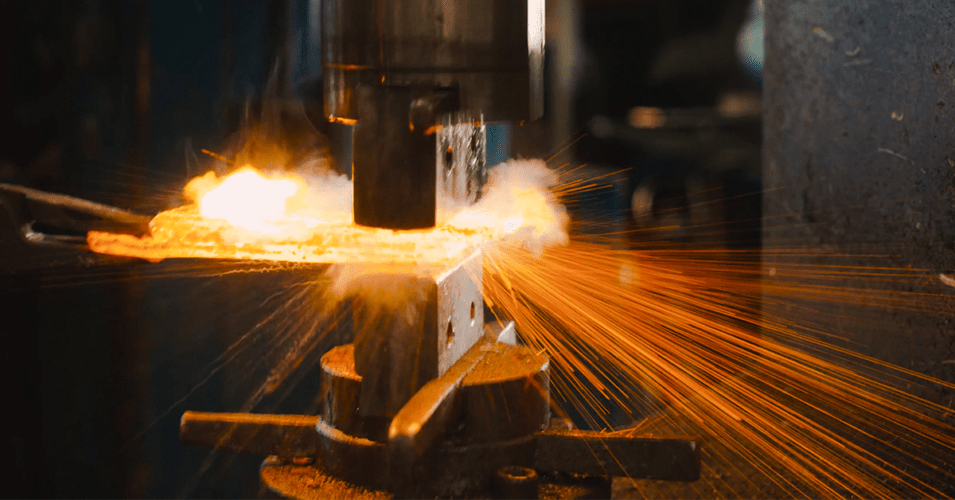hot forging is a critical process in manufacturing that involves shaping metals at elevated temperatures. While this technique is essential for creating durable components used in various industries, it also poses significant safety risks to workers and challenges related to maintaining product quality. In this blog, we’ll explore the importance of hot forging safety measures for both worker well-being and ensuring the production of high-quality forged products.
The Hot Forging Process
Before delving into safety and quality assurance, let’s briefly understand the hot forging process:
- Heating: Metal billets are heated to high temperatures to make them malleable. This typically involves the use of furnaces or induction heating.
- Forging: The heated billet is then subjected to compressive forces in dies to shape it into the desired form. This process may involve multiple steps and tooling changes.
- Cooling: After forging, the component is often subjected to controlled cooling processes to enhance its mechanical properties.
Ensuring Worker Safety
Hot forging environments can be hazardous due to the extreme temperatures involved and heavy machinery in use. Ensuring worker safety is paramount, and here are key safety measures:
1. Protective Gear:
Workers must wear appropriate personal protective equipment (PPE) including heat-resistant clothing, safety glasses, gloves, and steel-toed boots to safeguard against burns, impact injuries, and flying debris.
2. Training:
Comprehensive training programs are essential to educate workers about the risks involved in hot forging. Training should cover equipment operation, emergency procedures, and safe work practices.
3. Ventilation and Temperature Control:
Proper ventilation is crucial for removing harmful fumes and maintaining a tolerable working environment. Additionally, temperature control within the facility helps prevent heat stress and related health issues.
4. Machine Safety:
Regular maintenance and inspection of forging equipment are essential to ensure machinery operates safely. Safeguards, emergency stops, and machine guarding must be in place and functioning correctly.
5. First Aid and Emergency Response:
Hot forging facilities should be equipped with first aid stations and fire suppression systems. Emergency response plans should be in place to address accidents or fires promptly.
6. Hazard Identification and Mitigation:
Regular hazard assessments and risk analysis are essential for identifying potential safety risks. Once identified, these hazards should be mitigated through engineering controls or procedural changes.
Maintaining Quality Assurance
Safety in hot forging isn’t just about protecting workers; it’s also integral to ensuring the quality of the forged products. Subpar safety practices can lead to defects, rework, and product failures. Here’s how quality assurance ties into safety:
1. Material Handling and Inspection:
Proper material handling and inspection protocols are essential to prevent the use of substandard materials that could lead to defects in the final product.
2. Operator Training:
Well-trained operators are more likely to produce quality products. Training should emphasize not only safety but also the importance of adhering to forging process parameters for product consistency.
3. Process Control:
Maintaining strict control over the forging process, including temperature, pressure, and cycle times, is crucial for producing products that meet specified quality standards.
4. Non-Destructive Testing (NDT):
Incorporating NDT methods like ultrasonic testing and magnetic particle inspection can help detect hidden defects in forged components, ensuring product quality.
5. Documentation and Traceability:
Proper documentation of process parameters and quality checks allows for traceability and facilitates identification and rectification of any quality issues.
6. Continuous Improvement:
A culture of continuous improvement, where lessons learned from safety incidents and quality deviations are used to refine processes, is vital for long-term quality assurance.
The Dual Impact of Safety and Quality Assurance
Hot forging safety measures and quality assurance practices are deeply interconnected. Prioritizing safety reduces the risk of accidents and workplace injuries that can disrupt production and compromise product quality. Conversely, maintaining strict quality standards helps ensure the products meet or exceed customer expectations and minimize rework or recalls due to quality issues.
In conclusion, hot forging safety is not just a matter of regulatory compliance; it’s a cornerstone of responsible manufacturing. By prioritizing worker safety and implementing rigorous quality assurance measures, hot forging facilities can safeguard their employees, produce high-quality components, and establish a reputation for reliability in an industry that plays a pivotal role in the global manufacturing landscape.
